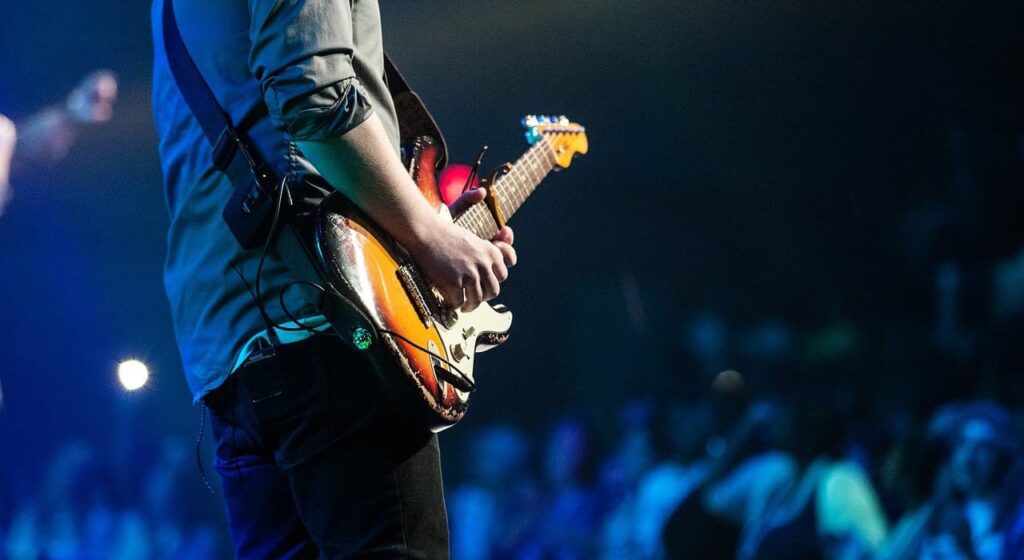
Red Rocks seating tip: Is there a perfect spot for the best sound?
The famous Red Rocks Amphitheater in Colorado is sometimes called acoustically perfect. But that’s not what Harold Dominguez experienced last May.
That spring night, “in typical Colorado weather style,” was far from ideal for an outdoor show. It was snowy and cold. That’s another part of the legend. The weather at Red Rocks is very cool.
“And there was side winds all over the place,” said a Denver-based software developer. “I noticed … the saxophone, falsetto singing was getting very strong at some points and getting very soft at some points.”
“The sonic irregularities” he heard from high up did not appear in the videos of the same concert he watched later. Those videos were shot much closer to the stage than his nosebleed seats. This prompted him to ask Colorado Wonders , “are there any advantages or disadvantages to sitting far or close to the stage when you’re at a show at Red Rocks.”
Andy Torrey, front-office engineer for Colorado band Big Head Todd & the Monsters , guesses what Harold heard that night atop the amphitheater.
“The farther up the mountain you go, the stronger the wind can play,” explained Torrey Stochero. “Sidewind will play on that even more, and you can get a swirling sound where it sounds good one minute and then sounds like the vocals or acoustic guitar are disappearing the next.”
It seems unfair to consider Red Rock acoustically perfect. For a show there to sound great, the sound team has to overcome a lot of challenges. Torrey has voiced about 20 concerts at Red Rocks, including the Big Head Todd concert in June.
He said it was a “smooth” night. But they’re not always so smooth, and at outdoor venues like Red Rocks, he often has to work against temperature, wind, humidity and altitude.
“They all affect the sound differently,” he said. A little rain isn’t necessarily a bad thing, though.
“The humidity actually helps spread the sound … while the wind can take it away,” Torrey said. “I performed in Aspen a few years ago when it snowed at a concert, and I don’t know if it ever sounded better.”
The steep climb is also a problem for both the sound and the audience coming in. Torrey said he could set the speakers with a slight incline “to go up the hill and be powerful going up the hill.”
Torrey tests the sound no matter where the band is performing to prepare for as many scenarios as possible. Pink Noise, which “has equal energy per octave,” helps him understand which frequencies are amplified or attenuated by the acoustics of the room. From there, he can align the overall mix that will be sent to the speakers that night.
He will do all this work beforehand, but he can also make adjustments throughout the show.
“One of the things about live sound is that it ends in an instant. You don’t have the ability to rewind, you deal with the situation and keep moving.”
The packed Red Rocks is also a jolt. All of these bodies can “really help the sound.” True, with the screaming crowd in the stands, the soundcheck didn’t happen.
“And so the reflective surfaces of the seating stairs reflect off of you, as opposed to a concert where all the people are absorbing the sound,” Torrey said. “They can yell and scream and add their level of noise to the show. But they also absorb the sound and create a different environment.”
So, is there a better place to sit? Torrey likes to sit close, about 17th row. But that’s also very subjective, and everyone’s best seats are different. He said that if you like your music loud, you’ll have more fun up front. If not, “go higher up the hill where it’s not as powerful.”
“You can move from left to right, and that can change,” Torrey said. “So really move and find your place. Every place is different. Every concert is special.”
Dominguez is often at Red Rocks shows, about 10 every summer, he said. But now, with this new information about where to sit, he felt “like a more educated Red Rocks concertgoer” with a deeper understanding of what goes on in the sound booth – even if the sound isn’t perfect.
“I’d come back here if no one was creating the sound, but just playing it from my iPod,” he said. “Concert or not, there’s something special about this place.